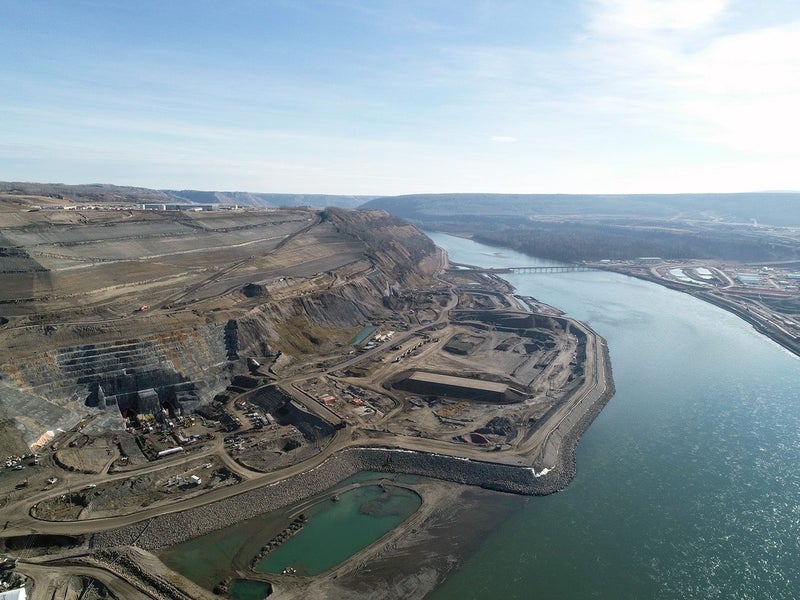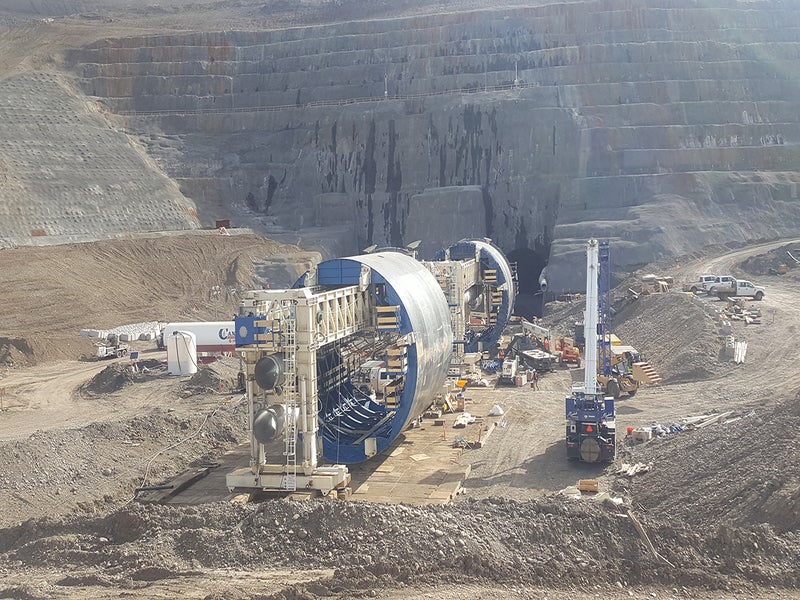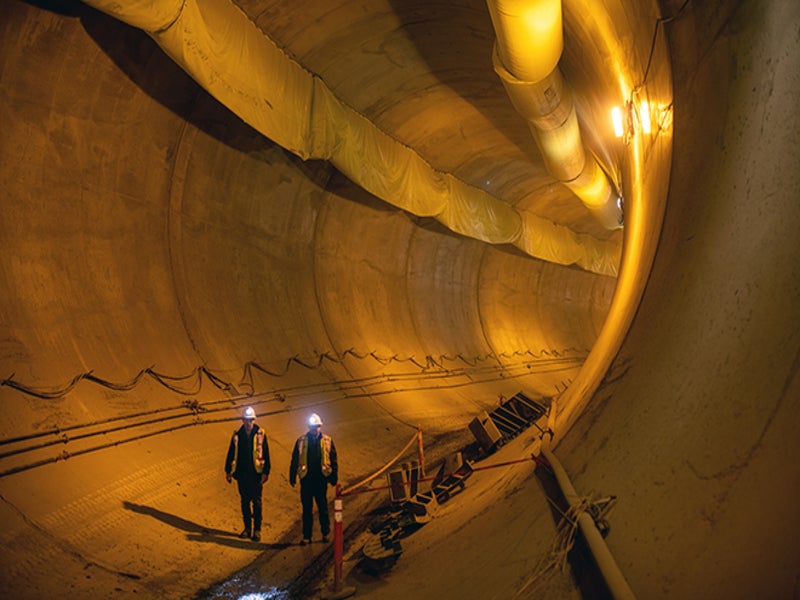The Site C Clean Energy project is a 1.1GW run-of-the-river hydroelectric power plant under construction on the Peace River, British Columbia, Canada.
British Columbia Hydro and Power Authority (BC Hydro) is developing the project with an estimated investment of C$10.7bn ($8.33bn). Located downstream of the existing WAC Bennett and Peace Canyon dams, Site C will be BC Hydro’s third hydroelectric facility on the Peace River.
Construction works on the project were started in 2015, while the first generating unit is expected to commence operations in 2024. The remaining five units are expected to come online in 2025.
At full capacity, the Site C hydropower station will generate up to 5,100 gigawatt-hours (GWh) of electricity a year, which will be sufficient to power approximately 450,000 British Columbian households a year.
The hydroelectric power project is intended to provide clean and reliable electricity for more than 100 years.
Site C reservoir and dam details
The Site C Clean Energy project includes a 60m-high and 1,050m-long earth-fill dam with a crest width of 10m. The dam’s main spillway comprises seven gates.
The Site C dam will create an 83km-long reservoir with a total surface area of 9,330ha. It will mainly utilise storage water from the Williston reservoir of the existing WAC Bennett dam.
The project also includes the construction of two cofferdams on the north and south banks of the river, and building an 800m-long and 70m-high roller-compacted concrete (RCC) buttress to provide the foundation for the powerhouse and spillways.
Site C Clean Energy hydroelectric plant make-up
The Site C Clean Energy hydroelectric power plant will be equipped with six 183MW vertical-axis, Francis turbines.
The water diversion system for the project comprises two 10.80m-diameter tunnels, 700m and 800m in length, respectively.
The powerhouse will receive water flow through six penstocks, each 80m long and 10m wide. The water discharges from the generating station and spillways will be conveyed into the river through a tailrace system.
Power evacuation
The electricity generated by the Site C hydroelectric power station will be evacuated through two 500kV alternating current (AC) power transmission lines connected to the existing Peace Canyon electrical substation.
Main contractors involved in the Canadian hydropower project
Peace River Hydro Partners (PRHP), a partnership between Acciona Infrastructure Canada, Petrowest Corporation and Samsung C&T Canada, was awarded a contract worth C$1.75bn ($1.25bn) to construct the earth-fill dam, diversion tunnels, and the RCC buttress for the Site C hydroelectric power project in December 2015.
AFDE Partnership, a group of four construction companies including Aecon, Flatiron, Dragados, and EBC, was awarded a C$1.6bn ($1.24bn) contract to build the powerhouse, penstocks, spillways, and the power intake structure of the project in March 2018.
Voith Hydro Canada received a C$470m ($366m) contract to manufacture and supply six turbines and generators along with associated equipment for the Site C project in March 2016.
F and M Installations (FMI), an industrial contractor based in Nanaimo, British Columbia, Canada, was awarded a contract worth C$128m ($102m) for the balance of plant (BOP) electrical works of the project in October 2021. It also previously received a C$33m ($25m) contract to construct a substation at the site in March 2018.
Mitchell Installations, a company based in Burnaby, British Columbia, Canada, bagged a contract worth C$70m ($55m) for the BOP mechanical works of the project in July 2021.
Allteck Line was awarded a C$113m ($91m) contract to construct 75km of transmission lines between Site C and the Peace Canyon generating station in June 2018.
ATB Riva Calzoni Hydro Canada is responsible to manufacture and supply gates, hoists and embedded parts of the generating station and spillways under a C$68m ($52m) hydromechanical equipment contract awarded in May 2018.
REEL COH, a crane manufacturer based in Quebec, Canada, received a C$23m ($18m) contract to supply two 320t powerhouse bridge cranes, a 130t headworks gantry crane, and an 80t tailrace gantry crane in March 2018.
Other contractors and suppliers involved in the Site C project
Fulcrum and Sers Engineering Group (FYSEG) provided civil engineering design services for the project in 2015.
Klohn Crippen Berger (KCB), which provided preliminary design services for the project during 1989 and 1991, was engaged in tender services, technical reviews, as well as in the environmental assessment process.
Kryton supplied Hard-Cem® hardening admixture to increase the abrasion and erosion resistance of the project’s concrete structures, while Waiward was selected as the structural steel supplier for the project in May 2018.
Nextgen Technologies was selected to perform testing and commissioning of all the communication protection and controls (P&C) and telecom equipment associated with the transmission system of the project.
Hatfield was subcontracted by AFDE Partnership to provide overall environmental management and monitoring services for the construction of generating station and spillways.
Morgan Construction and Environmental was contracted for site preparation activities, including the construction of a 7km-long access road, as well as excavation and site clearing works for the project in July 2015.
Infrastructure BC was contracted to build accommodation camps for workers at the site.





